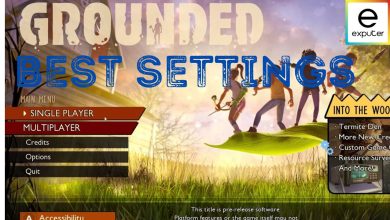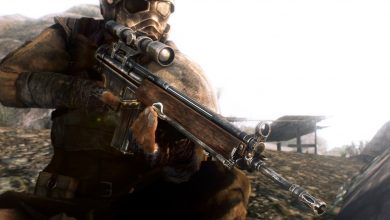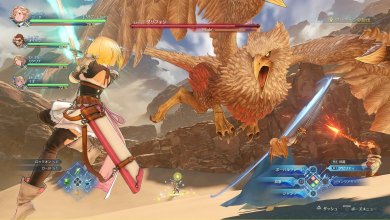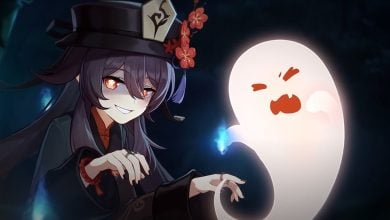When Salt and Sanctuary was first released back in 2016, it was hailed as a phenomenal little indie game that had managed to do what a lot of other bigger and more elaborate games had failed to accomplish. It had successfully captured the essence of the Dark Souls series of games, with all of their emphasis on difficulty and balancing, while also translating that into a 2D format.
It was and continues to be, to this day, one of the most faithful adaptions of the classic FormSoft formula. So when a sequel was announced, a lot of fans were obviously really excited. A new game in the series would be coming out, and it would feature better animations, a more detailed art style, and perhaps a lot more ambition.
And after waiting so long for the sequel to finally release, I am sad to say that developer Ska Studios has unfortunately not managed to strike gold a second time. Salt and Sacrifice is still a great game in many regards, but in many other ways, it is also a massive step back. Something has been lost along the way, and with this review, I hope to help players understand exactly what that is.
- Developer: BlueTwevle Studio
- Publisher: Annapurna Interactive
- Release Date: July 19, 2022
- Platforms: PS4, PS5 and PC
- Predecessor: None
Story And Setting
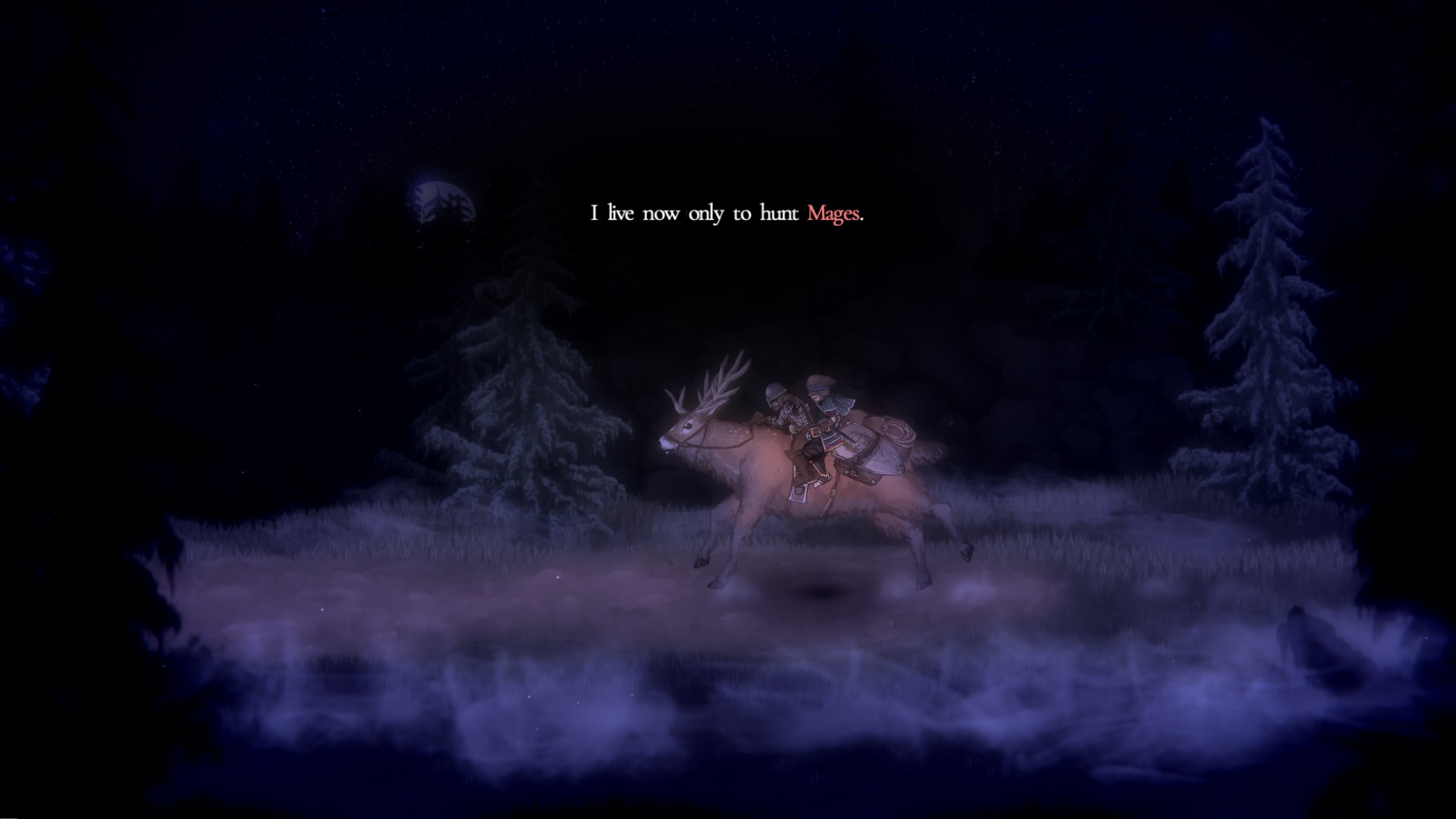
While not a wholly unique idea for a setting, Salt and Sacrifice takes place in the Alterstone kingdom, a land that is under siege by otherworldly beings and monsters that wreak havoc wherever they go. The source of these creatures are enemies known as Mages, powerful individuals whose magic is responsible for the rot within the land.
You, the player character, have been found guilty of a crime and have been given the choice between death or service to the kingdom. Many in your situation opt for death, but you are one of the brave few who has instead chosen to live a life of atonement as a Marked Inquisitor and hunt down the Mages as your final sentence.
In preparation for this task you had to undergo a ritual known as the Magebane Rite, which has left you in a perpetual state between life and death. Whenever you fall in battle, you are immediately bought back to life in a safe area. It’s a convenient little story beat that helps explain why your character is able to respawn after death each time.
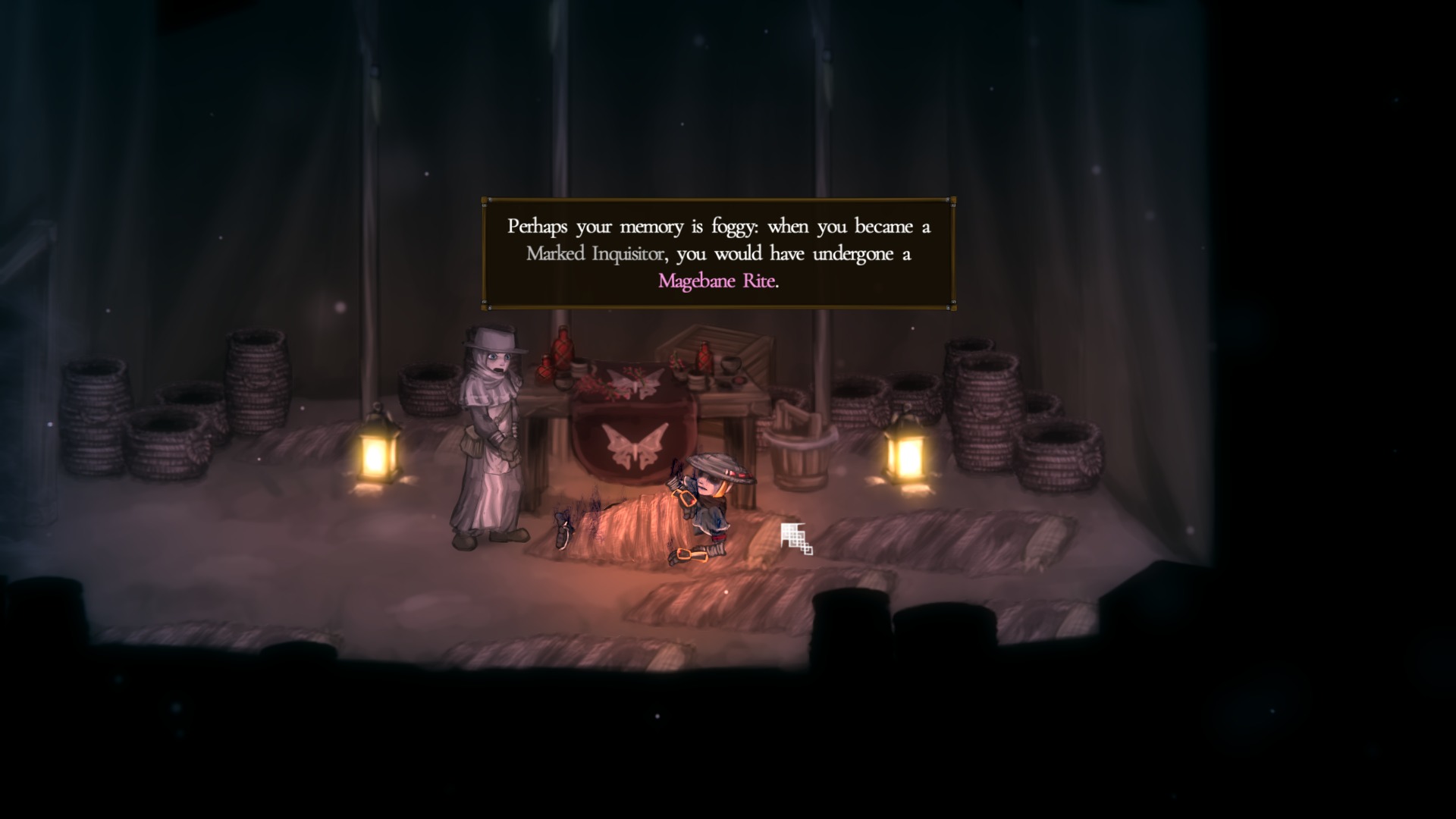
When the adventure first starts off, you are on your way to serve out your sentence, when you are ambushed by a group of enemies. At this point the game throws an incredibly simple and short tutorial section at you in order to inform you of the basic controls, followed by an encounter with an extremely tough boss. You can beat this monstrosity if you really try hard enough, but dying to it is what the game intends for you.
And die you most likely will, after which you will awaken in Pardoner’s Vale, the main hub area of the game. Here you can talk to NPCs for more information about the plot, or to learn more about your current goal. Vendors all over are also willing to sell you new weapons, armor, consumables, and even help you craft and upgrade unique equipment.
From Pardoner’s Vale, your main task now is to venture forth into the world and hunt down Mages in order to consume their Hearts. This is essential because progress is often gated until you devour a certain number of these Mage Hearts, and certain doors refuse to open until you present your spoils to them.
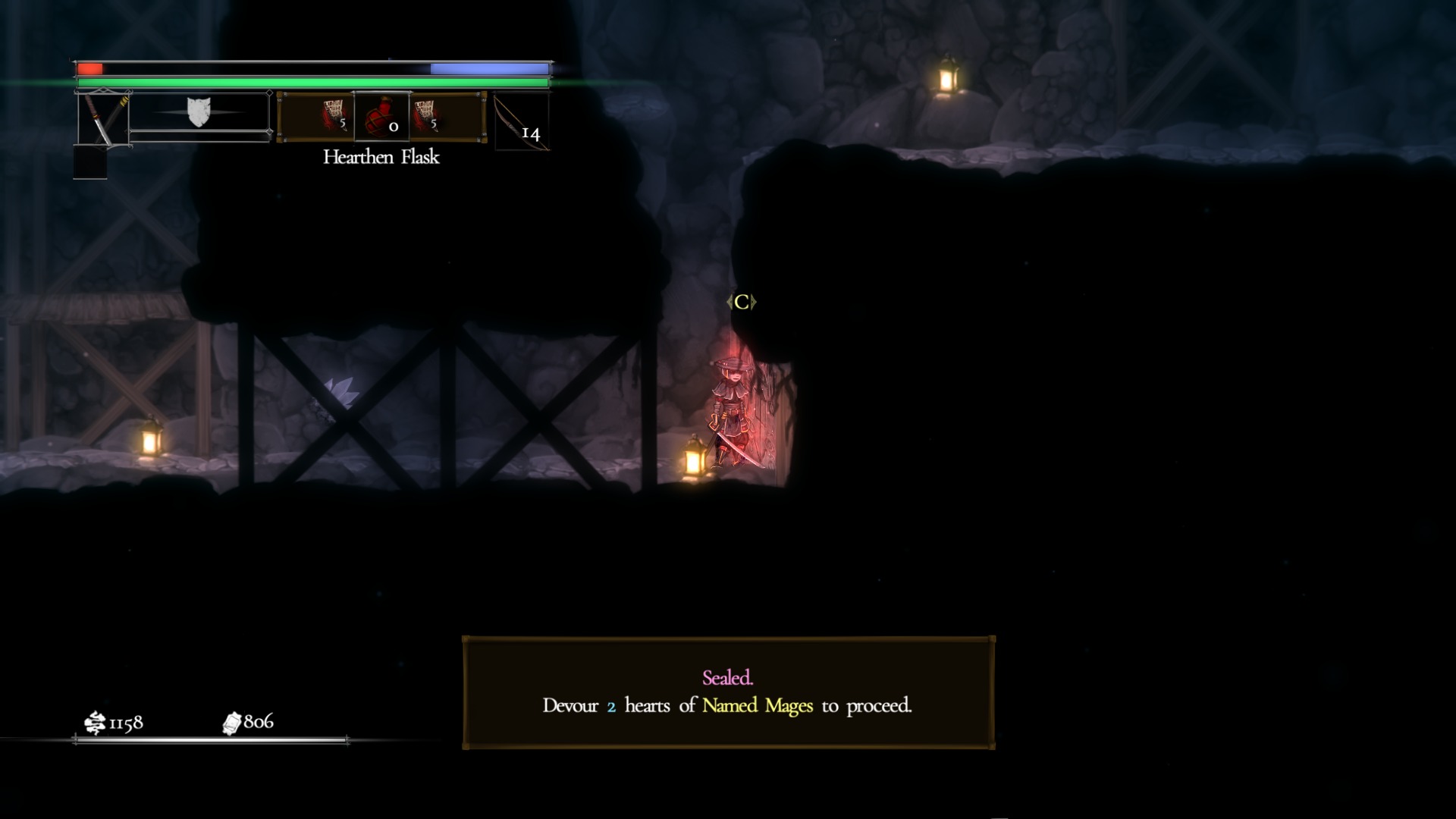
Unlike the previous game, the world is no longer comprised of one large map. The Alterstone kingdom is split off into five distinct regions, each of which can be traveled to using a magical portal known as the Mirrorgate. In terms of souls games, think of Salt and Sacrifice like Demon’s Souls, where each new region has its own theme, hidden pathways, treasures, NPCs, etc. Each of the five areas you visit are also massive, and you are free to explore them as you please, but the interconnectivity that was key to the first title is mostly gone, and that’s going to be a massive negative for a lot of players
Gameplay
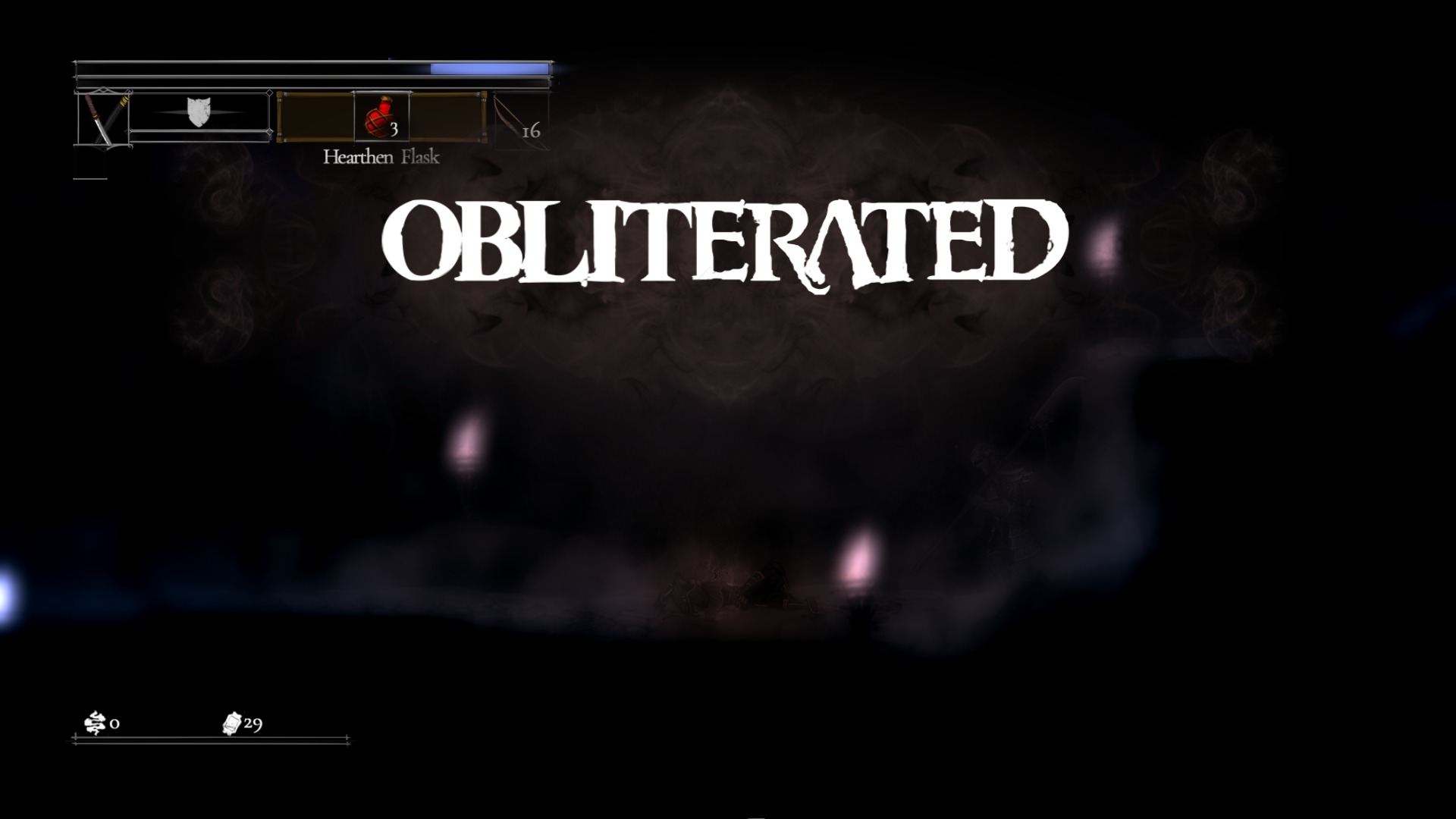
Now to reiterate, your main goal is to hunt down the Mages and consume their hearts in order to progress through the story. Each location you visit has a set number of these enemies, and you have to find clues in order to track them down. Once you find evidence of their presence in an area, a trail appears that you can follow directly to the enemy, but things aren’t that simple at all.
In an incredibly irritating twist, these Mage boss fights are not relegated to a single arena. When you encounter them for the first time, it initiates a sort of chase, where you have to engage the Mages in multiple smaller fights over a series of encounters that constantly escalate in difficulty.
Sometimes the enemy might spawn in a handful of really powerful minions to assist it, while other times it may teleport to an area that can only be reached by defeating a literal horde of mobs, most of whom could deplete your resources before you ever reached your target.
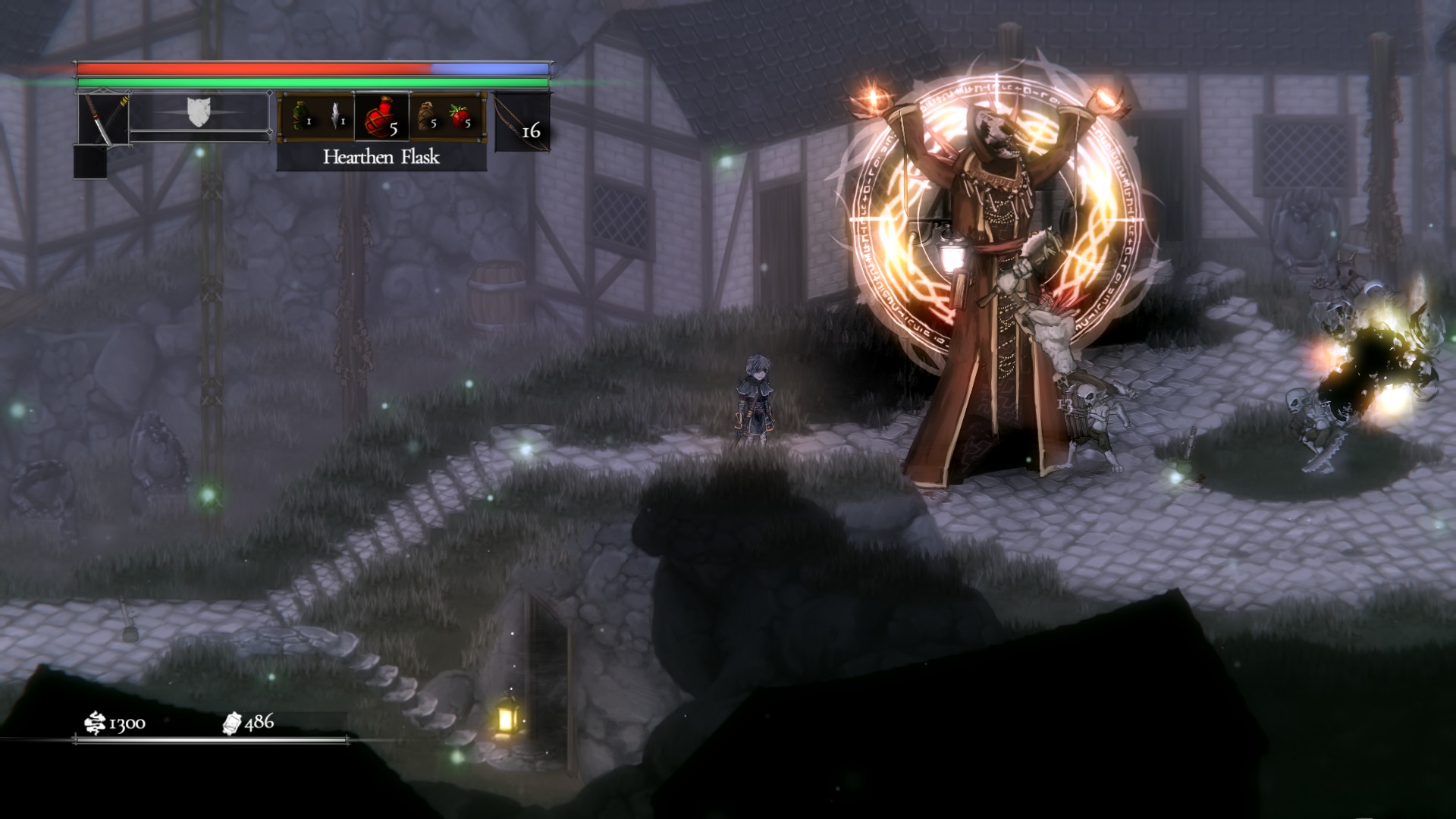
Only when you have already fought a Mage multiple different times, can the final battle actually begin. For the most part, these are traditional boss fights in enclosed arenas, and they are really fun. But the struggle you have to go through to get to them is usually not worth the effort you have to put into them. There are multiple Mage fights in Salt and Sacrifice where the greatest challenge is not the actual battle, but the incredibly difficult boss run that you have to go through in order to get to the fight. This aspect of the game is so unbelievably annoying.
What makes this even more frustrating is the fact that the game does not feature any sort of map. Now the first game didn’t have one either, but that world was also much more linear than this one so you could easily memorize the pathways. Here though, I have gotten lost getting to a boss fight so regularly that I’m almost ashamed to admit it. And if none of that was enough, there is no option to fast travel at all.

Obelisks, which act as resting spots where you can replenish consumables and recover your health, are fairly common in the world and their placement is never too close or too far from each other. So as you progress through the game, you’ll always find regular resting spots to take a break at. But in another baffling decision by the developers, you cannot actually fast travel to any of them.
So if you make it all the way to the end of an area and decide that you’re not quite strong enough to take on the last boss of the region yet, or that you want to head back to the hub to upgrade your equipment, you can actually teleport back to the main camp directly from any Obelisk. But to be able to get back to them, you have to fight the same enemies, avoid the same hazards and traverse the exact same platforming challenges all over again. This leads to so much backtracking and makes the entire game more repetitive than it had to be.
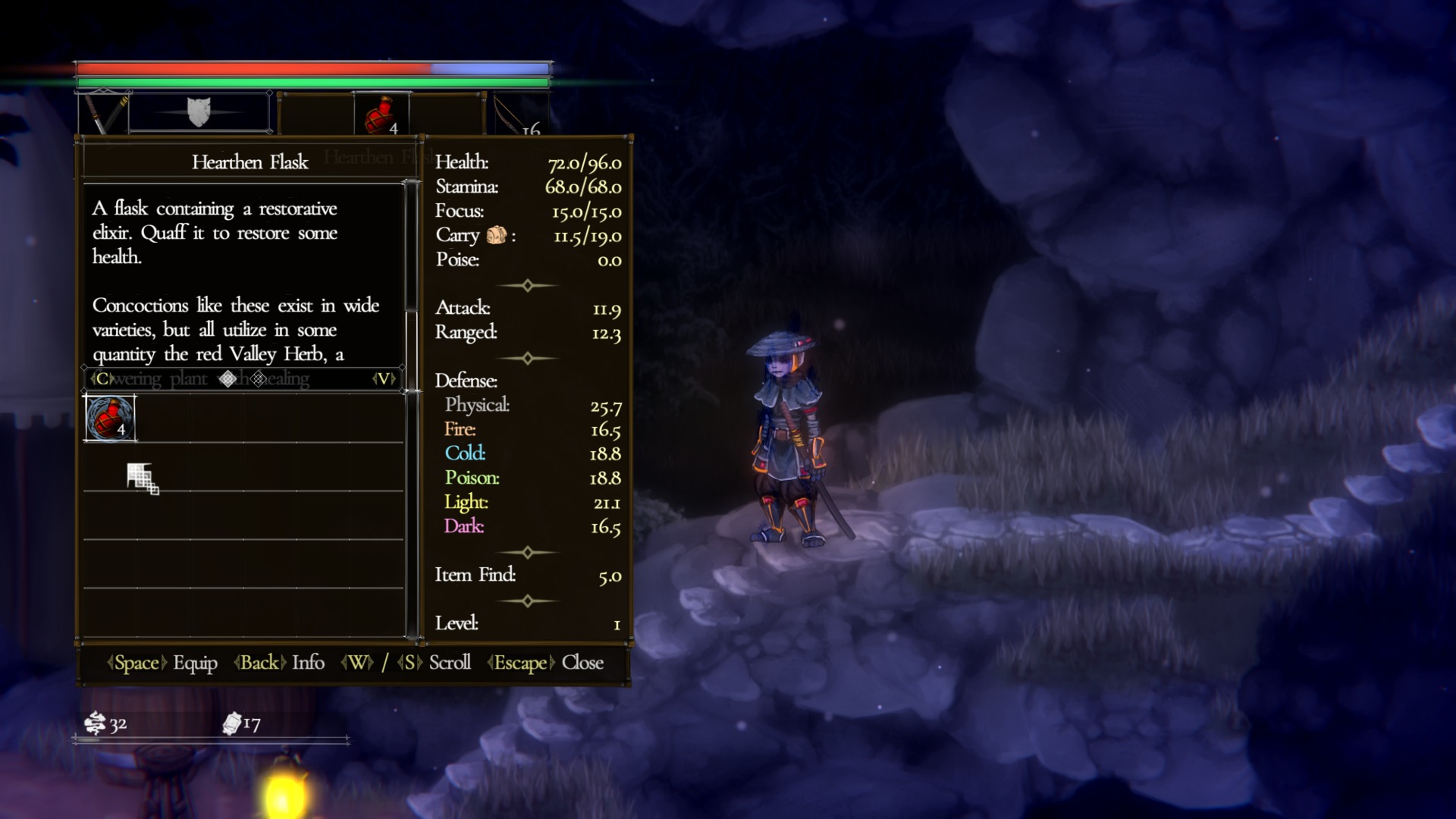
And the final nail in the coffin is the fact that your main healing items, Hearthen Flasks, are not automatically refilled when resting. You require a fairly common resource to be able to craft them at Obelisks, but the fact is that you can always run out of them if you’re not paying attention. So if you’re someone who goes through their stock of flasks quickly, prepare to do a lot of farming when a tough enemy or boss keeps killing you. It’s such an unnecessary system that only acts to make all of the annoying problems I’ve described above even more unbearable.
Apart from that, the core gameplay is still pretty fun. Like the Souls games, you have to manage stats like Strength, Dexterity, Endurance, Luck, etc. Each of these determines your performance with a specific aspect of combat and exploration, and you have to carefully level them up in order to equip certain pieces of gear. Like all games of this genre, there are a lot of builds you can try out, and you also have access to the standard blocks, parries, dodge rolls, and light and heavy attacks.

And speaking of equipment, You have access to a wide range of weapon types, and almost all of them are fun to use thanks to significantly improved combat animations and a much weightier feel. Each weapon class also has access to its own unique moveset, making them feel distinct from each other and ensuring that different types can come in handy in a variety of different situations. When you start the game, you can choose from one of a handful of different classes and you get a pre-determined loadout based on that class. You can choose to be an Assassin with dual blades, a Cleric with a mace, or even a Highblade with a katana.
The weapons and armor you start off with are fairly regular, but over time you can find or purchase much more powerful variations with unique abilities called Runic Arts. These come in all sorts of shapes and sizes, and you can use them to unleash a number of effects like summoning a tornado or launching homing projectiles. But using these abilities requires two different resources, namely Focus and Rage. Focus is this game’s version of a mana bar, and can only be recovered by resting or using recovery items. Rage on the other hand is gained by engaging in combat.
Another cool new feature that Salt and Sacrifice introduces is a Monster Hunter-style gear crafting system. Each Mage in the game is unique, and when you defeat them, they drop a variety of different body parts that you can collect. These components can then be taken to the blacksmith in order to craft them into different weapons and armor pieces.
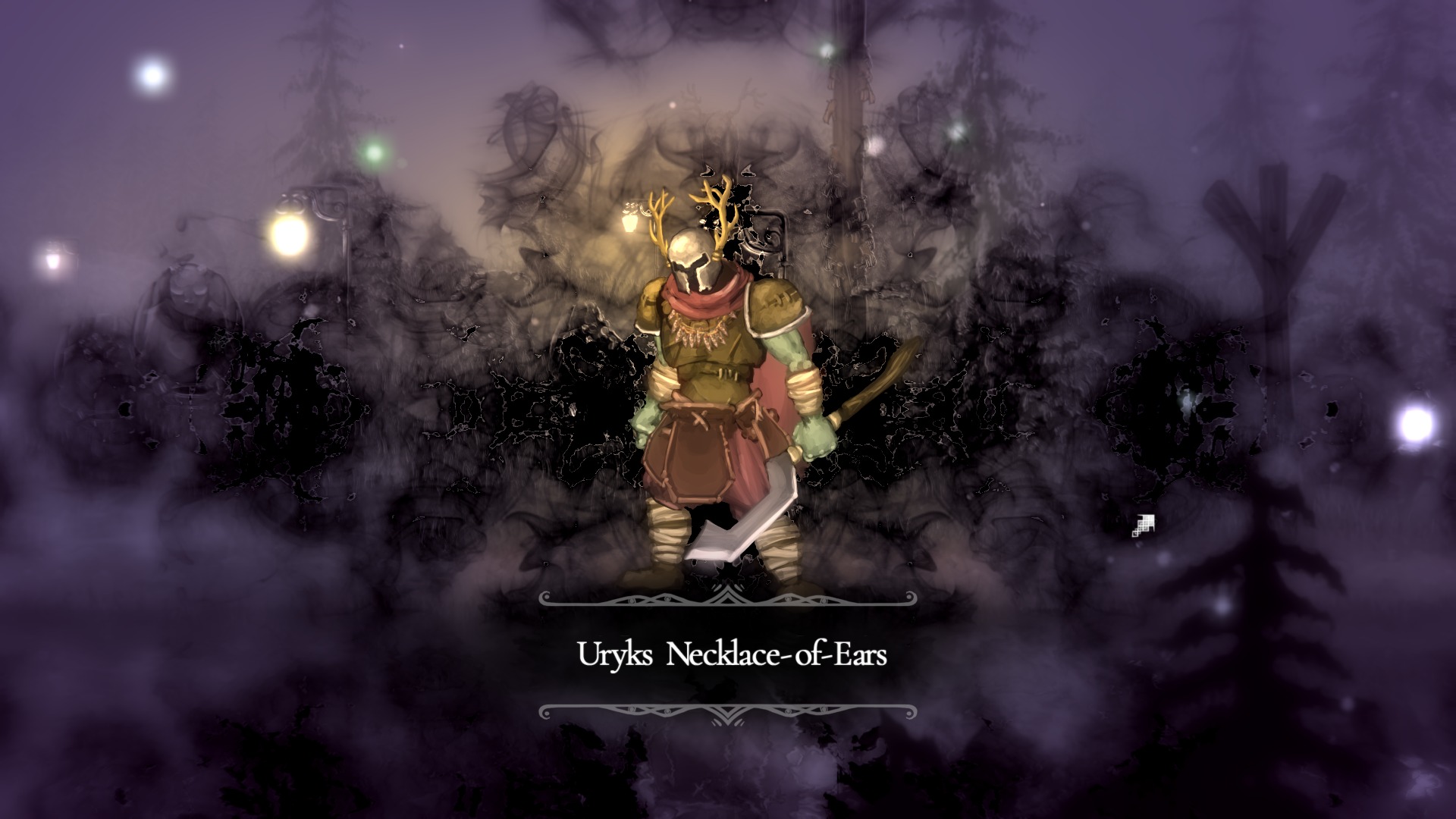
But like Monster Hunter games, chances are that you will not be able to collect all the materials required to create a full set by killing a Mage only once, and the game also understands that. So it gives you the option to hunt these bosses down again and again to get their drops. Is this system really cool? Yes, it is. But once again this requires you to constantly have to journey back and forth to different regions on foot simply to be able to hunt down your targets again and again.
One of the biggest saving graces of this game is the brand new seamless multiplayer, which allows you to call a friend so that you can adventure and take down bosses together. Playing with others is always more fun, but a companion can be an absolute godsend during some of the more unreasonable Mage Hunts during the latter half of the game. All you have to do is enter the exact same passcode, and you can start playing together.
Visuals And Performance
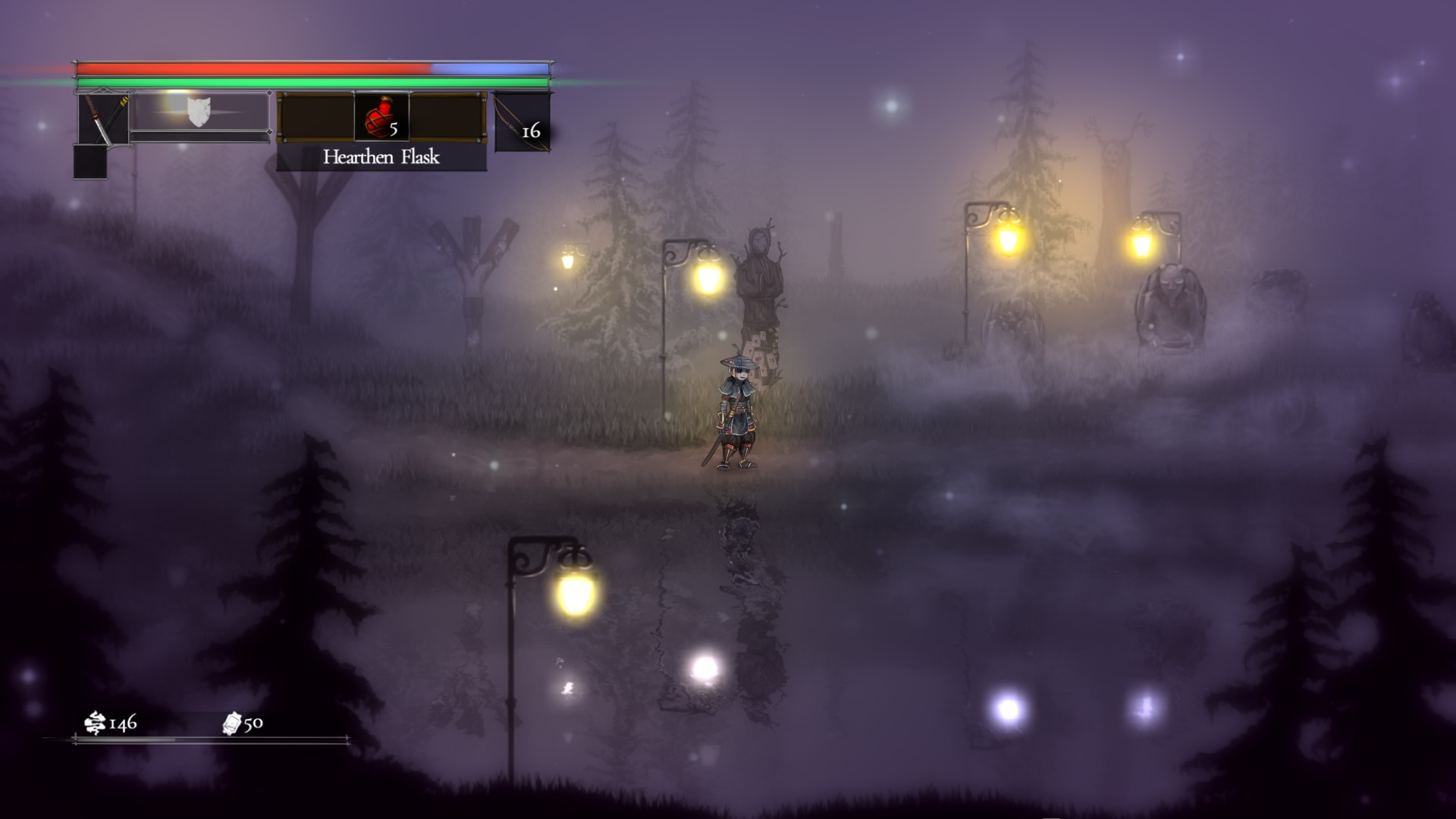
By all accounts, Salt and Sacrifice is a really pretty game. Each of the regions you visit in the world has a distinct theme, and the weather effects, lighting, and general ambiance all adhere to that particular style. The 2D art that populates all of the backgrounds is also really detailed and gives depth to what could easily have been bland and boring areas. Seriously, some of these backdrops are absolutely gorgeous.
The animations and particle effects are also much better than in the previous game, and attacks flow beautifully in the heat of battle. I don’t think it’s fair to compare the animations to some of the game’s peers, purely because of the number of attacks and abilities it gives you access to. But the fact that they all look good is a great achievement.
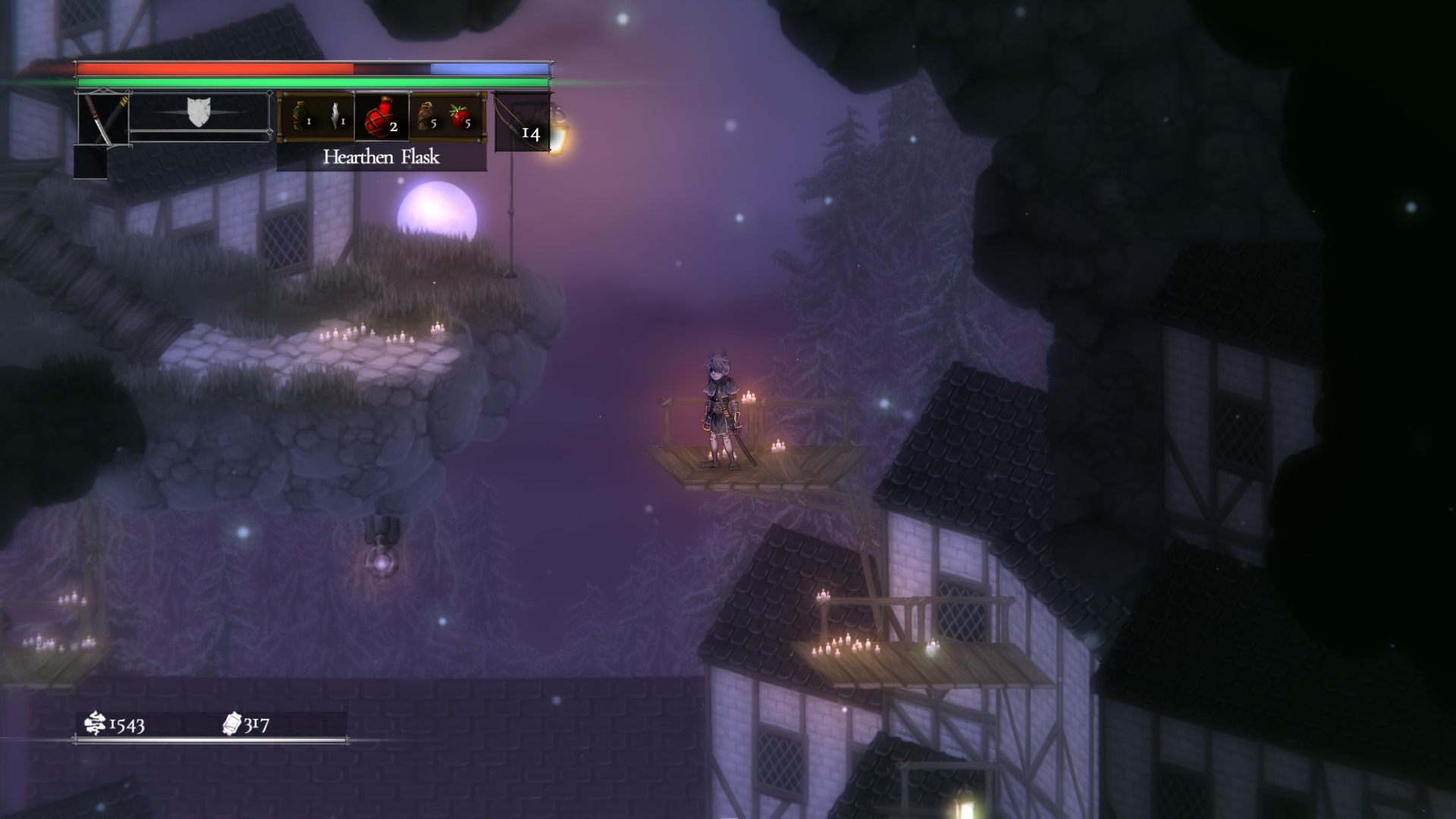
In terms of performance, I didn’t really encounter any sort of bugs or stuttering. Salt and Sacrifice has such low system requirements that you could run it easily on a decade old machine.
I personally was able to run it at a smooth 60FPS at all times on an older laptop, even when the screen was absolutely crowded with enemies, or when the particle effects really went out of control. It’s a simple game, and it will run on most machines easily.
Salt and Sacrifice Verdict
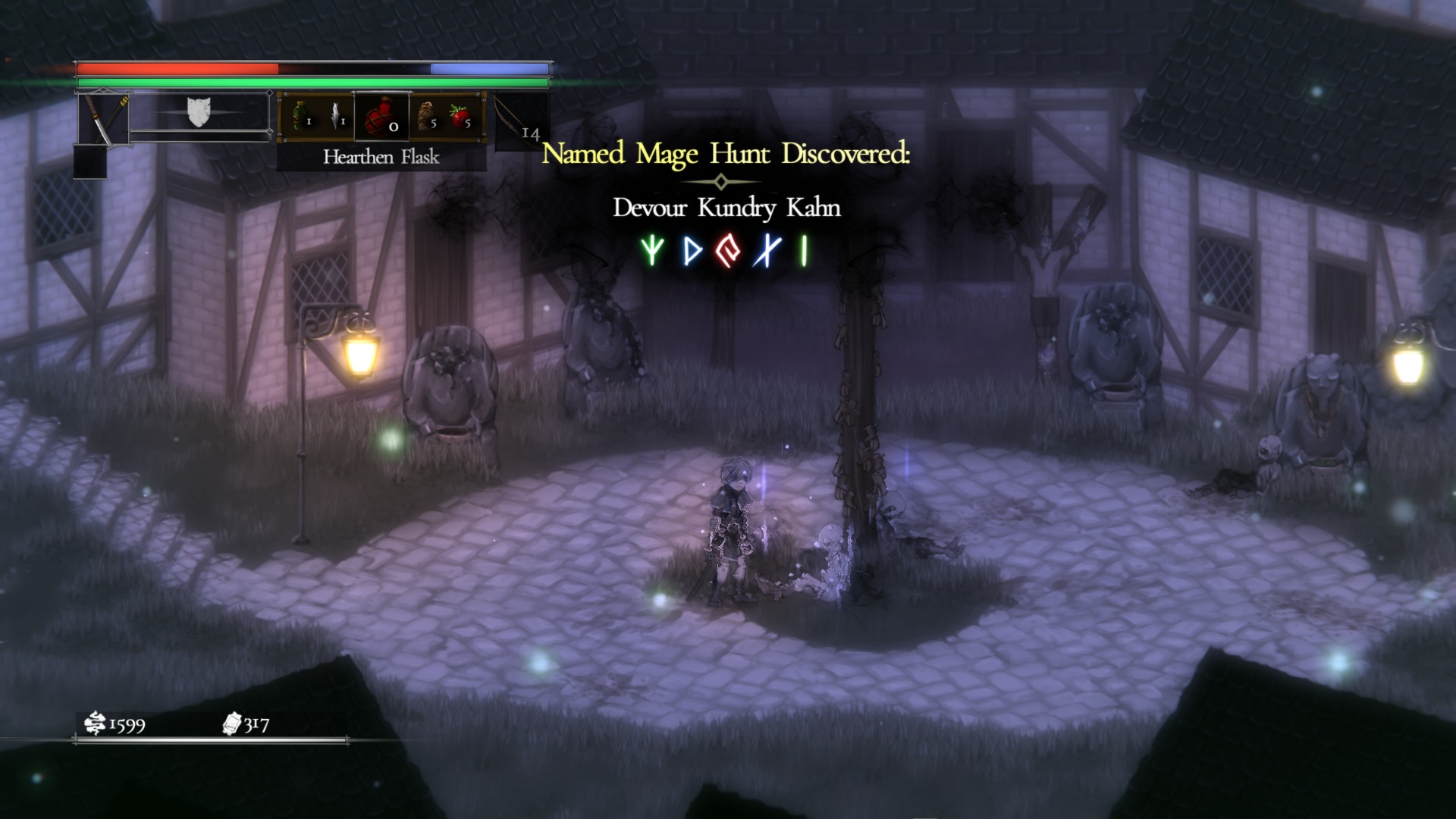
I really wanted to love Salt and Sacrifice, but I cannot ignore the problems that plague it. The core combat is great, and I genuinely do love the boss fights, but the repetitive nature of the Mage Hunts cannot be overstated.
Instead of a single giant interconnect world, we now have access to 5 diverse locations instead. And while these are fun to explore, the lack of a fast travel system makes moving through them more tedious than it has to be. It’s a simple issue, but it drags down the entire experience.
And finally, I love the new Monster Hunter style gear crafting system. I can spend literal hours grinding for a new weapon or an armor set, but once again, the lack of a fast travel system makes it unbearable at times.
This game can be a lot of fun, and I do think that fans of Salt and Sanctuary have a lot to look forward to. But I cannot ignore its flaws, and I cannot help but recommend it only to those players who are really big fans.
The Good
- Great Core Combat.
- Addictive Gear Crafting System.
- Great Boss Fights.
- Beautiful Artstyle.
- Can Run On A Toaster.
The Bad
- No Map.
- No Fast Traveling.
- Mage Hunts Can Be Tedious.
- Backtracking Can Get Repetitive.
- Healing Items Are Limited.
Salt and Sacrifice Rating – 3/5
Thanks! Do share your feedback with us. ⚡
How can we make this post better? Your help would be appreciated. ✍
